Mount Mary
Houses within 15km of this house
Displaying 232 houses.
Houses within 15km of Mount Mary
Displaying 232 houses.
| House name | Description | |
|---|---|---|
| Vernon Mount | Built by Atwell Hayes in the 1780s, Vernon Mount was the residence of John Leslie in 1814 and of O. Hayes in 1837. Soon afterwards it was leased to William Lane and he was the occupier at the time of Griffith's Valuation, holding the house valued at £55 from Attiwell Hayes. The Hayes sale rental of 1851 describes this house as "a large handsome building erected by the present owner's father at a cost of £5000". It was leased by the Hayes family to William Lane in 1839. A building still exists at this site. | |
| Annsville House | The representatives of Simon Davis were holding this property in fee at the time of Griffith's Valuation when it and the adjacent mills were valued at £45. The latter is labelled Ballinadee Mills and is described as disused on the 25-inch Ordnance survey map of the 1890s. Some buildings still remain at the site. | |
| Oak Hill | At the time of Griffith's Valuation, Henry Westropp was leasing this property to Geoffrey Rawlins, when it was valued at £9 5s. It is labelled Oak Hill on the 1st edition Ordnance Survey map but as Oakfield on the 25-inch edition of the 1890s. A house is still extant at the site. | |
| Peafield | George H. Rawlins was the proprietor of Peafield at the time of Griffith's Valuation, though it was unoccupied. Lewis distinguishes between Peafield and Peafield House which he indicates was the seat of the Minton family. | |
| Cloncouse | Thomas Lucas, MD, held this property in fee at the time of Griffith's Valuation, when the house was valued at £7 5s. It is not named on the Ordnance Survey maps and is no longer extant. | |
| Wood Hill/Knocknacurra House | Benjamin Gillman was leasing this property to William McCrate at the time of Griffith's Valuation when it was valued at £14 5s. Lewis refers to the house as Knocknacurra, seat of Benjamin Gillman in 1837. It is labelled Knocknacurra House on the 25-inch Ordnance Survey map of the 1890s. Farm builidngs appear to occupy the site now. | |
| Upland | William Spiller was leasing this property from Benjamin Gillman at the time of Griffith's Valuation when it was valued at £5 5s. There is still an extant house at this site. | |
| Knocknagappul House | The representatives of Robert Belcher were leasing this property to Francis Croker at the time of Griffith's Valuation when it was valued at £8 10s. There is still an extant house at this site. |
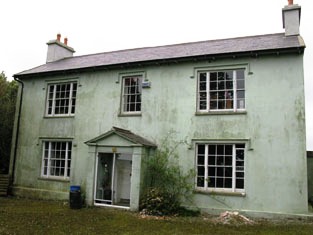
|
| Rock House | Edward Gillman held this property in fee at the time of Griffith's Valuation when it was valued at £24. Lewis records the property as the seat of J. Gillman in 1837. It was offered for sale in the Encumbered Estates Court in June 1851. In the late 1770s it was occupied by a member of the Baker family. There is still an extant house at this site. | |
| Tullyland | This property was held in fee by the representatives of Messers. Cornwall at the time of Griffith's Valuation, when it was valued at £8. A house still exists at the site. |
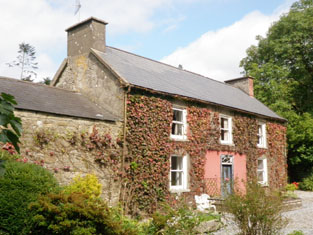
|
| Still View House (Cottage) | Robert Allman was leasing this property from the Earl of Shannon's estate at the time of Griffith's Valuation, when it was valued at £17 and had a mill adjacent. It is labelled Still View Cottage on the 1st edition Ordnance Survey map but an enlarged property at the site has become known as Still View House by the 1890s. A house still exists at the site. Allman was also leasing a mill, described as a flour mill on the 1st edition map. This site had expanded into an extensive woollen mill by the 1890s. Extensive industrial buildings still remain at the site. | |
| Distillery House | Richard Allman was leasing this property and the adjacent distillery from the Earl of Shannon's estate at the time of Griffith's Valuation. The properties were valued at £200. Distillery House is labelled on the 25-inch map of the 1890s. The distillery is labelled Allman's Distillery on the 1st edition Ordnance Survey map but as Bandon Distillery on the 25-inch edition of the 1890s. It is still extant and serves as a public house. |
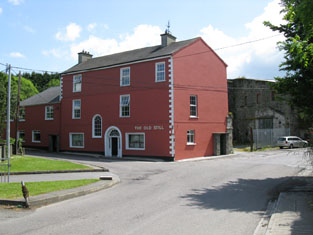
|
| Brookfield (Bandon) | Godfrey Baldwin was leasing this house from the representatives of Hugh Levinge at the time of Griffith's Valuation, when it was valued at £15. It is still extant though in need of refurbishment. |
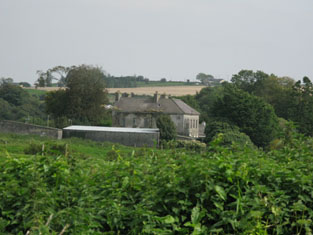
|
| Tullyland House | William Westropp and others were leasing this property to Nicholas Thomas at the time of Griffith's Valuation, when it was valued at £7 10s. There is still a house named as Tullyland House, at this site. | |
| Rockfort House | This house was the property of John Hornibrook at the time of Griffith's Valuation when it was valued at almost £9 and unoccupied. The house is still extant. He was also the owner of the nearby Rockfort Mill [W526587], valued at almost £13 and leased to Johanna Hurley. The latter property is labelled "disused" on the 25-inch Ordnance Survey map of the 1890s. |
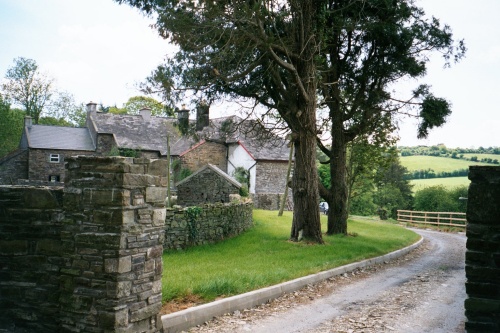
|
| Highfort | Reverend Somers Payne was leasing this property from Anne Nash at the time of Griffith's Valuation, when it was valued at £12. There is an extant house at the site which the National Inventory of Architectural Heritage asserts was built c.1880. |
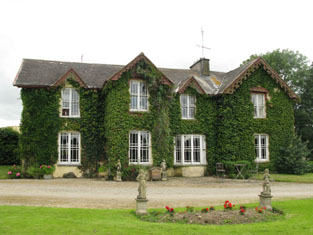
|
| Cor Castle | Thomas Frewen was leasing this property to James Corker at the time of Griffith's Valuation, when it was valued at £16 10s. In 1837 it was the seat of Chambre Corker. Cor Castle was in ruins for many years following its burning in June 1921 during the War of Independence. At the time it was the residence of Mrs. Carolne Stephenson, who, Donnelly indicates, had inherited it from her mother, Sophia Corker. It has recently been restored. |
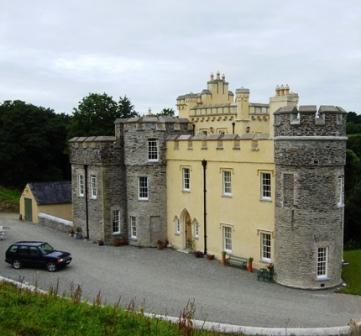
|
| Cliff Fort | Thomas Frewen held this property in fee at the time of Griffith's Valuation, when it was valued at almost £7. There is still a house at this site. | |
| Belmont (Inishannon) | James Corker was leasing this property to Frederick Meade at the time of Griffith's Valuation, when it was valued at £16 10s. Lewis refers to it as the seat of Major Meade in 1837. It is still extant and occupied. |

|
| Downdaniel | The representatives of Chambre Corker were leasing this property to Rev. Richard Lane Connor at the time of Griffith's Valuation, when it was valued at £40. Lewis records it as the seat of Rev. Connor in 1837 when he describes it as a "modern mansion near the old castle". In the 1870s Downdaniel is recorded as the address of James Young Sandys. It is still extant. |
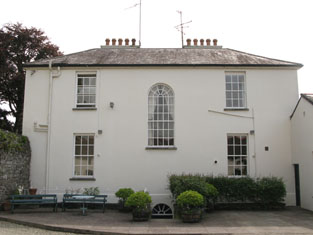
|
| Firgrove | At the time of Griffith's Valuation, the representatives of Chambre Corker were leasing this property to Richard Quinn when it was valued at £18. In 1837 Lewis notes it as the seat of R. Quin. In 1906 it was held by the representatives of Mary Quinn and valued at £7 10s. A house still exists at this site. | |
| Hawthorn Villa | At the time of Griffith's Valuation, Thomas Frewen was leasing this property to Robert Edwards, when it was valued at £10. Buildings still exist at the site where a stud farm operates. | |
| Ballymountain House | John Wheeler was leasing this property from the Earl of Bandon's estate at the time of Griffith's Valuation, when it was valued at £15. There is still an extant house at Ballymountain, on a large farm and run as a guesthouse. |

|
| Sunning Hill | Richard Quinn was leasing this property to Amelia Quinn at the time of Griffith's Valuation, when it was valued at £18. Lewis refers to its as the seat of Mrs. Quinn in 1837.The original house is no longer extant. | |
| Ballinacurra House (Kinsale) | Ballinacurra House was held in fee by Mary Bleazby at the time of Griffith's Valuation, when it was valued at £18 5s. In 1786, Wilson refers to "Balnacurragh" as trhe seat of Mr. Swete. It is still extant and sometimes let as holiday accommodation. |

|
| Knockrobin | Mary Anne Bolton held this property in fee at the time of Griffith's Valuation, when it was valued at 17 10s. Lewis records it as the seat of Captain E. Bolton in 1837. A house is still extant at the site. | |
| Pallacetown House | Pallacetown House was held in fee by Samuel P. Townsend at the time of Griffith's Valuation, when it was valued at £14. On the 25-inch map, published in the 1890s, it is labelled Pallastown. In the 1940s the Irish Tourist Association Survey stated that it had previously been a residence of the Heard family but was then occupied by the Jagoes. It is still extant. | |
| Doon (Kinsale) | Rev. John Webb was leasing this property from the representatives of John Kearney at the time of Griffith's Valuation, when it was valued at £13 10s. An Encumbered Estates Sale notice of January 1851 indicates the mansion house at Doon was originally part of the Sullivan estate. Doon is still extant. |
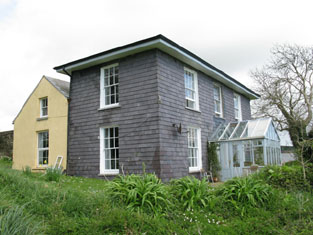
|
| Blackhorsefield | Rev. Francis Stawell was leasing this property to Eugene Sweeney at the time of Griffith's Valuation, when it was valued at £16. Changes seem to have taken place at the site by the time of the 25-inch Ordnance Survey map of the 1890s. A school occupies this location now. | |
| Ardbrack House | Ardbrack House was being leased by John Walton from the representatives of John Bleazby at the time of Griffith's Valuation, when it was valued at £16. The National Inventory of Architectural Heritage suggests it was built in the early years of the nineteenth century. It is still extant. |

|
| Prospect Villa (Kinsale) | Prospect Villa was being leased by John G. Daunt to Frances Falloon at the time of Griffith's Valuation, when it was valued at £12. The property now known as Prospect Villa, probably built in the 1870s, was offered for sale in 2009. |
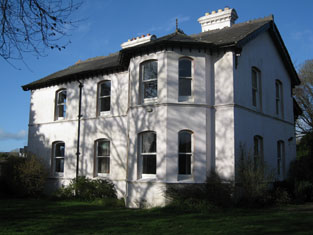
|
| Scilly House | John G. Daunt was leasing Scilly House to Major Black at the time of Griffith's Valuation, when it was valued at £15 5s. It is still extant and offers holiday accommodation in the grounds. | |
| Brownsmills | The representatives of T. Kearney held this property in fee at the time of Griffith's Valuation, when it was valued at £14 10s and included a mill complex. Portions of the mill complex have been converted into apartments. |
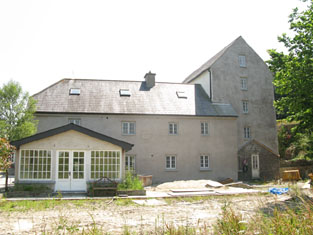
|
| Snugmore | Snugmore House was being leased to William Newenham by John Daunt at the time of Griffith's Valuation, when it was valued at £10. It is no longer extant. | |
| Cappagh Folly | William Newman held property valued at almost £10 at Cappagh, Kinsale at the time of Griffith;s Valuation. It included a dairy and orchard. The 6-inch Ordnance Survey map also shows a turret on the property. | |
| Scilly | At the time of Griffith's Valuation, Rev. William Newman was leasing this property to George Dawson, when it was valued at £24. It included stores. |
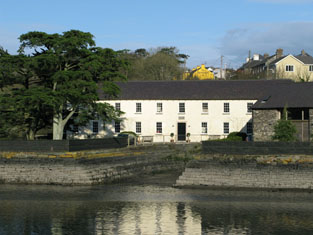
|
| Harbour Hill House | Harbour Hill House was being leased by Charles Newman to Rev Thomas Townsend at the time of Griffith's Valuation, when it was valued at £8 15s. Harbour Hill is still extant. |
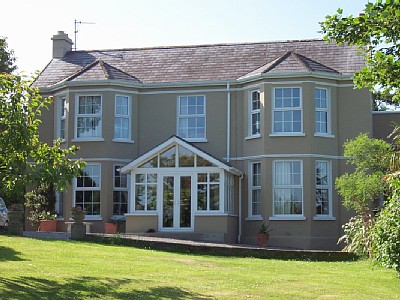
|
| Knockduff House | Rev. Thomas Townsend was leasing Knockduff House to John F. Lee at the time of Griffith's Valuation, when it was valued at £22. Lewis refers to Knockduve as the seat of Lt. Gen. Sir. T. Browne in 1837. It is no longer extant. | |
| Rathmore House (Kinsale) | Marmaduke Cramer held Rathmore House in fee at the time of Griffith's Valuation, when it was valued at £40. Lewis described it as " a handsome mansion embosomed in flourishing plantations" in 1837 when it was the seat of J. Thomas Cramer. This house is no longer extant. | |
| Ardkilly or Ardkelly | Gill Gillman was leasing this property to Richard Gillman at the time of Griffith's valuation, when it was valued at £7 10s. He was also the lessor of another unoccupied house in the same townland, valued at almost £9. [Grid Reference is approximate]. In 1837 Lewis referred to Ardkelly as the seat of R. Gillman. A house and farm still exist at the site. | |
| Ballywilliam | Ballywilliam House was being leased by Benjamin Barter to a member of the Bowen family at the time of Griffith's Valuation, when it was valued at £20. In 1837 Lewis referred to is as the seat of B. Barter. It is still extant. |
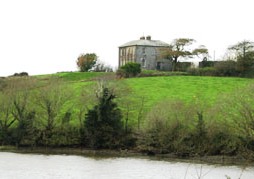
|
| Hollyhill House | Lewis refers to Hollyhill House as the seat of C. Newman in 1837. Leet recorded it as the seat of Thomas Newman in 1814. At the time of Griffith's Valuation, it was being leased by James Radcliff to Mary Anne Collis. Mrs. Collis was the owner of almost 1000 acres in county Tipperary in the 1870s. It does not appear on the 25-inch map of the 1890s and there is no evidence of it now. | |
| Ballinaboy House | In 1837 Lewis describes this house as a "handsome modern mansion surrounded with young and thriving plantations". John Moloney held Ballinaboy House in fee at the time of Griffith's Valuation, when it was valued at £40. Lewis described it as "a handsome modern mansion, the seat of J. Moloney" in 1837. In the early 1940s the Irish Tourist Association survey described it as being "in a good state of preservation" and occupied by a Mr.Tuttle. It is still extant and occupied. |

|
| Sheep Glen | John H. Wheatley was leasing this property to Michael Roberts at the time of Griffith's Valuation, when it was valued at £7 10s. It is still extant and occupied, situated on a large farm. | |
| Ballinluig | Isaac Seymour was leasing this property to John Smith at the time of Griffith's Valuation, when it was valued at almost £9. This house is no longer extant. | |
| Arlinstown House | James Gillman was leasing Arlinstown House to Thomas Richardson Leane at the time of Griffith's Valuation, when it was valued at £15. A house and extensive farm buildings are extant at this site now. | |
| Ballindresrough Mills | William R. Meade was leasing this property to Daniel Keller at the time of Griffith's Valuation, when it was valued at £25, including a flour mills. It is not marked on the later 25-inch map, suggesting it was no longer operational in the 1890s. Extensive farm buildings occupy the site now. | |
| Ballintober House | Sir John Meade, Knight, was located at Ballintober at the beginning of the 18th century. In 1777 and 1786 it was the seat of Reverend Mr. Meade. Ballintober House was held in fee by Reverend John Meade at the time of Griffith's Valuation, when it was valued at £30. Lewis refers to it as the seat of J. Meade in 1837. In the 1870s it was the property of Reverend Mr. Meade. In the 1940s the Irish Tourist Association Survey stated that it was the property of John Meade whose family had held it since the reign of Elizabeth I. The National Inventory of Architectural Heritage indicates that the original house is now ruinous but there are later buildings at the site. |

|
| Ballymartle | William R. Meade held Ballymartle in fee at the time of Griffith's Valuation, when it was valued at £35. It was also noted by Lewis as the seat of W.R. Meade in 1837. In the 1770s it was the property of Rev. W, Meade. In the 1940s the Irish Tourist Association Survey described it as "an imposing residence in a finely wooded estate, occupied by Major Meade". It is now a roofless ruin. |

|
| Mill-Land | William Meade was leasing this property to Thomas R. Leane at the time of Griffith's Valuation, when it was valued at almost £9. | |
| Mullagh or Rock Hill House | William R. Meade was leasing this property to Thomas R. Leane at the time of Griffith's Valuation, when it was valued at £8 10s. It is labelled as Rock Hill House on the 6-inch Ordnance Survey map but appears on the 25-inch map of the 1890s as Mullagh House. A possibly later house and large farm occupy the site now. | |
| Coolkirky | The representatives of Gresham Herrick held this property in fee at the time of Griffith's Valuation, when it was valued at £25. The house burned down in the late 1990s. | |
| Glendoneen | Jeremiah Roberts was leasing this property to Rev. John Stoytt at the time of Griffith's Valuation, when it was valued at £45. Lewis refers to Glendoneen as the seat of Rev. J. Stoyte in 1837. It is still extant and occupied. |

|
| Grange (Athnowen) | Smith records Mr Onesiphorus Phaire as resident at Grange, Ovens, in 1750. Wilson, writing in 1786, refers to it as the seat of Mr. Whyte. This house was the home of the Hawkes family in the 19th century, occupied by J. Hawkes in 1814 and 1837 and by John Hawkes in the early 1850s, when the house was valued at £12 and held from Sir John Walsh. A house is still extant at the site. | |
| Brinny House | Brinny House was being leased by J.H. Wheatley to Rev. George Nash at the time of Griffith's Valuation, when it was valued at £30. In October 1854, it, together with the rest of Nash's property at Brinny, was offered for sale in the Encumbered Estates Court. The house is described in the sale notice as "in good repair". Lewis refers to it as the seat of J. Nash in 1837. In the late 1770s and 1780s it was the residence of Nash esq. In 1942 the Irish Tourist Association Survey referred to "a semi-derelict old mansion near Brinny Bridge, the reputed residence of Seán Dearg Nash, tyrannical provost of Bandon, 1690-1724". The original house is no longer extant. | |
| Clashanimud Cottage or Glenview House | Rev. George Nash was leasing this property to Henry Nash at the time of Griffith's Valuation, when it was valued at £10. It is labelled on the 25-inch Ordnance Map, published in the 1890s, as Glenview House. There is no house at this site now. | |
| Brinny Rectory | Brinny Rectory was held in fee by Rev. James Gollock at the time of Griffith's Valuation, when it was valued at £25. The house is still extant and occupied. |
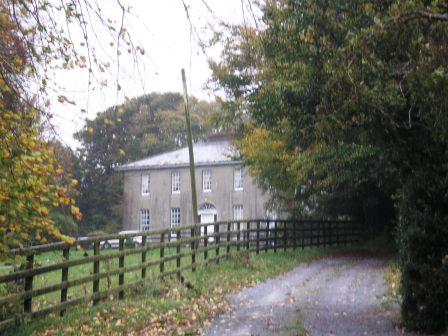
|
| Stonehill House | Henry Busteed was leasing Stonehill House from William B. Warren and others at the time of Griffith's Valuation, when it was valued at £11 10s. A smaller house in the same townland, also owned by Warren and known as Maryville [W725608], was valued at £8. It was occupied by Robert Condron at that time. Neither of these houses are extant now. | |
| Glinny House | George Dunne was leasing Glinny House from Thomas Daunt at the time of Griffith's Valuation, when it was valued at £25. Lewis refers to it as the seat of G.N. Dunne in 1837. The Daunt family also owned Glinny Cottage [W669595] in the same townland, then valued at £8 and occupied by Elizabeth Walsh. Though altered Glinny House is still extant. |
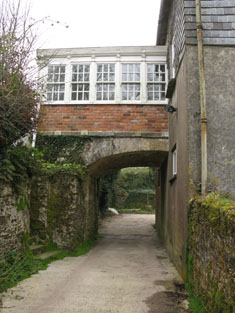
|
| Heathburn Hall | George Daunt held this property in fee at the time of Griffith's Valuation, when it was valued at £35. The National Inventory of Architectural Heritage notes that it was later associated with the Shaw familiy who made additions to the house in the early twentieth century. In the 1940s the Irish Tourist Association Survey noted it a the residence of Mr. Bateman. There is still an extant property at the site. | |
| Dunderrow House | The building at this site is recorded as a Glebe house on the 1st edition Ordnance Survey Map.A different building at the site is labelled as Dunderrow House on the 25-inch edition of the 1890s. John C. Kearney was leasing this property to Blayney Calnane at the time of Griffith's Valuation, when it was valued at £8. There is still an extant house at the site. Lewis refers to "Dunderrow Cottage" as the seat of Rev. R. Halburd in 1837 but this is a different property in the townland of Horse Hill Beg. Local sources also suggest that Thomas Adderley lived "at Dunderrow" before moving to a house in the centre of Inishannon village. In 1786, Wilson writes that Thomas Adderley had a seat at Inishannon. |
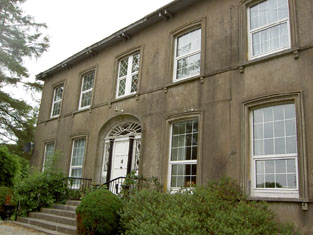
|
| Leighmoney House | Lewis records E. Gillman of Leoffney [Leighmoney?], parish of Dunderrow in 1837. John C. Kearney held this property in fee at the time of Griffith's Valuation when it was valued at £15. There is still an extant house at the site. | |
| Rigsdale House | Not named on the 1st edition Ordnance Survey map but labelled Rigsdale House on the 25-inch map, published in 1899. At the time of Griffith's Valuation it was described as "herd's house" and being leased by the Wheatley estate to the representatives of Benjamin Roberts. It was valued at £10 at the time. In the early 1940s the Irish Tourist Association survey noted that " there is no trace of the old residence of the family. Richard Bird lives in modern residence of Rigsdale". It is still extant and part of a farming enterprise. |

|
| Annagh More House (Cork) | In 1786 Wilson refers to Anagh as the seat of Mr. Barter. The representatives of Benjamin Roberts were leasing this property from Rev. W.C. Brent and others at the time of Griffith's Valuation, when it was valued at £18. In the late 1870s, it was the seat of the Barter family. It is no longer extant. | |
| Frankfort | Francis Sealy was leasing this property from F. Westcott at the time of Griffith's Valuation when it was valued at £19 though Lewis refers to "Woodview" as the seat of F. Sealy in 1837 and occupied by Oliver Ellard in 1814. Local sources indicate that this house was built by the Hodder family. See www.bandon-genealogy.com. More recently the Inishannon House Hotel. |

|
| Danesfort (Inishannon) | Rev. Somers Payne was leasing this house from John Phibbs at the time of Griffith's Valuation, when it was valued at £10. Now a care facility run by Brothers of Charity services. | |
| Dunkeeran Cottage | Matthew B. Hornibrook was leasing this property to Thomas Hornibrook at the time of Griffith's Valuation, when it was valued at £10. The house is still extant and occupied. |

|
| Riverview | Rev. Michael Field was leasing this property from the Frewen estate at the time of Griffith's Valuation, when it was valued at £10. It was burnt in June 1921 during the War of Independence when it was the residence of Col. Francis Godley. Now a ruin. | |
| Innishannon House or Castle View | Rev. Robert Maunsell was leasing this property from the Frewen estate at the time of Griffith's Valuation, when it was valued at £22 10s. It is labelled Castle View on the 1st edition Ordnance Survey Map but named Inishannon House on the 25-inch map of the 1890s. It was burnt in June 1921 during the War of Independence. | |
| Ballindeenisk House | Mrs. Charlotte Harrison held this property in fee at the time of Griffith's Valuation, when it was valued at £8. It is one of two houses labelled Ballindeenisk House on the 1st edition Ordnance Survey map and it also appears under this name on the later 25-inch edition of the 1890s. It is no longer extant. | |
| Belgooly Cottage | At the time of Griffith's Valuation, Belgooly Cottage was being leased to William Gash by several lessors including Mrs, Charlotte Harrison, members of the Daunt family and the Earl of Bandon's estate. It was then valued at £9. It is labelled Belgooly Cottage on the 1st edition Ordnance Survey map but is not labelled on the 25-inch edition of the 1890s. | |
| Cramer's Court or Ballindeenisk | Labelled as Ballindeenisk on the 1st edition Ordnance Map and as Cramer's Court on the 25-inch series published in the 1890s. It was being leased by Benjamin Jeffers from the Earl of Bandon's estate at the time of Griffith's Valuation, when it was valued at £11. It is now a Nursing Home. |

|
| Oatlands | In 1837, Lewis refers to Oatlands as "the handsome mansion of Captain Knolles" and that their original house at Killeigh was in ruins. At the time of Griffith's Valuation the property was held in fee by Thomas Walton Knowles, when it was valued at £35. There is still an extant house at the site. | |
| Newborough | Newborough was being leased by George A. Daunt from William Drew at the time of Griffith's Valuation, when it was valued at £40. It is also referred to as his seat by Lewis in 1837. It was in a ruinous condition for many years but is currently undergoing restoration. | |
| Gortigrenane House | At the time of Griffith's Valuation, this house was being leased by Anthony Savage from the Staughton estate, when it was valued at £40. Lewis refers to it as the seat of Luke Shea in 1837. Thomas A. Staughton owned a second property in this townland [W777575], valued at £10 and leased to David Drinan. Gortigrenane had originally been a Daunt property, which came to Staughton through marriage with Mary Daunt, of Owlpen, Gloucestershire. It is believed to have been remodelled in 1817. See www.owlpen.com. The house was destroyed during the War of Independence. In 1942 the Irish Tourist Association Survey described it as formerly the residence of L. Shea, "a noted smuggler" and then in the possession of the Kingstons. It is now a ruin. |
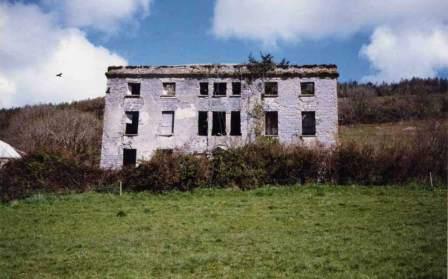
|
| Broomley | George Daunt was leasing Broomley from Reverend Thomas Townsend at the time of Griffith's Valuation, when it was valued at £18. Lewis refers to it as his seat in 1837. In 1942 the Irish Tourist Association Survey also noted it as a residence of the Daunt family. It is now a ruin. | |
| Willowhill House | Edward R. Warren was leasing Willow Hill House to Thomas Hungerford at the time of Griffith's Valuation, when it was valued at £13. It is still extant and occupied. |
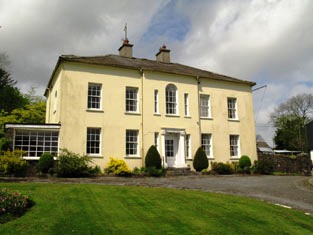
|
| Walton Court | Dame Anne Roberts was leasing Walton Court to Timothy Daly at the time of Griffith's Valuation, when it was valued at £15. Lewis refers to is as the seat of T. Walton Roberts in 1837. The Roberts family were bankers in Cork city who acquired the property in the eighteenth century. Prior to that it had been in the hands of the Walton family who had been granted Roche lands in the area. In the later nineteenth century it passed to the Knolles family of nearby Oatlands. Walton Court is still extant and occupied and offers holiday accommodation. See www.waltoncourt.com |

|
| Knocknanav House | John Hennessy was leasing this property from Richard Creagh and Thomas Leane at the time of Griffith's Valuation, when it was valued at £13. A house is still extant at this site. | |
| Fort William [Kinalea] | Charles L. Bernard held Fort William in fee at the time of Griffith's Valuation, when it was valued at almost £9. Lewis refers to it as the seat of William Penrose in 1837. Buildings remain at the site. | |
| Upton | Reverend Somers Payne held this property in fee at the time of Griffith's Valuation, when it was valued at £45. Lewis names the seat of Reverend Payne as "Upton" in 1837. Noted by Leet as the seat of W.L. Beaufort in 1814. James Welply was resident in the 1870s. In 1942 the Irish Tourist Association survey noted that a sister of the Sheares brothers, executed as United Irishmen, was married into the Payne family and that the brothers were in the habit of visiting Upton. This property is still extant and run as a facility providing nursing care services. |
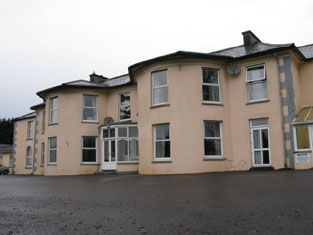
|
| Beechmount | Mary Nash was leasing this property to John Hornibrook at the time of Griffith's Valuation, when it was valued at £18. Lewis refers to it as the seat of J.Hornibrook in 1837. Still extant and now the site of Garryhankard Stud. In 2013 it was offered for sale. |

|
| Garryhankardmore | Mary Nash and Howard Wiseman were leasing this property to Robert Biggs at the time of Griffith's Valuation when it was valued at £35. In 1837 Lewis referred to as the seat of T. Biggs. There are still extant buildings at the site. | |
| Castleview or Inishannon House | Abraham Bazly was leasing this property from Sir Riggs Falkiner at the time of Griffith's Valuation when it was valued at £9. It is named Castleview on the 1st edition Ordnance Survey map but as Inishannon House on the later 25-inch edition of the 1890s. Modern housing exists at the site now. | |
| Ship-pool | Lewis refers to Shippool as the seat of Captain Herrick in 1837 when he describes it as " a handsome residence in a wooded demesne". At the time of Griffith's Valuation, it was being leased by Thomas Herrick to William Herrick and valued at £50. Local sources suggest it was built in the later eighteenth century when the family moved from Shippool Castle, but the house burned down later in the nineteenth century. It is recorded in the late 1770s as the residence of Herrick esq. and by Leet in 1814 as the seat of Wm. M.H. Herrick. A later house, also called Shippool, was built at the site in the early twentieth century and is still extant. Note: townland spelt as Skanagore in the Townlands Index but as Shanagore in other sources |
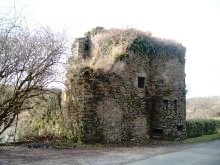
|
| Farran | This house was owned by Samuel Penrose at the time of Griffith's Valuation when it was valued at £24. It was also occupied by him in 1837. In 1868 Farran was bought by William Clarke and three generations of the Clarke family lived at Farran until 1970. In 1906 the buildings were valued at £226 and Thomas Clarke was the occupier. The Irish Tourist Association Survey in the 1940s describes it as "the splendid residence of Captain Clarke, living in the Channel Islands but occupied by his relatives". The present owners offer self catering accommodation for groups. see http://www.farranhouse.com/history.htm |

|
| Nohaval House | Baldwin Sealy owned this unoccupied property at the time of Griffith's Valuation, when it was valued at £9. Lewis refers to Nohaval House as the seat of W. Hungerford in 1837. A house still exists at the site. | |
| Old Castle (Tracton) | Achilles Daunt was leasing this property to Bartholomew Coveney at the time of Griffith's Valuation, when it was valued at £10. A house and extensive farm now exist at the site. | |
| Springhill House | William Daunt was leasing this property from William H. Daunt at the time of Griffith's Valuation when it was valued at £17 and included coal stores. It is still extant and in use. |
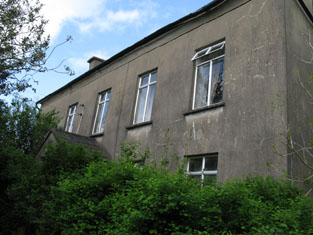
|
| Tracton Cottage | Achilles Daunt was leasing this property to Richard Hungerford at the time of Griffith's Valuation, when it was valued at £7. A house still exists at the site. | |
| Tracton Abbey | Denis Coveney was leasing this property from Achilles Daunt at the time of Griffith's Valuation, when it was valued at almost £9 with an adjacent mill valued at £11. Buildings are still extant at the site. | |
| Fivemilebridge Mill House | Joseph Coghlan was leasing this property to William Herrick at the time of Griffith's Valuation, when it and the adjacent mill were valued at £53. The mill buildings are no longer visible on the 25-inch map of the 1890s. The house is still extant. |
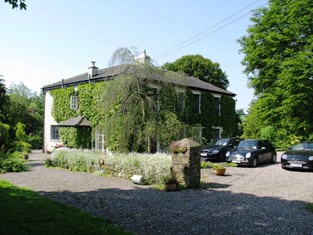
|
| Ballybricken House | Described by Lewis in 1837 as "the elegant mansion and demesne of D.Connor". It was held in fee by him at the time of Griffith's Valuation when it was valued at £64. The residence of Captain Denis Connor in 1894. In 1943 the Irish Tourist Association Survey mentions it as the residence of J.E. Bird, the walls built in 1820 but the interior having been restored following a fire in 1910. The Survey also notes that it was used as a base by the American navy during the first World War. The site is now covered by industrial premises. | |
| Prospect Villa | Thomas Burke was leasing Prospect Villa from Mary and Catherine Rogers at the time of Griffith's Valuation, when it was valued at £60. Lewis refers to it as the seat of Lt.Col. Burke in 1837. The house was included in the sale of the Rogers estate in the Landed Estates Court in February 1862. In 1943 the Irish Tourist Association Survey noted Prospect Villa as the residence of G. Hosford and outlined Burke's association with the house mentioning that he kept a racing stable there. The house is no longer extant and a factory has been constructed in this area. | |
| Castlewarren | Robert Warren was leasing this property from Mary and Catherine Rogers at the time of Griffith's Valuation, when it was valued at £35. In 1837 Lewis referred to it as a "spacious mansion erected in 1796, the seat of R. Warren". Townsend refers to it as the seat of Thomas Warren "whose style of farming is conducted on the best principles of modern art". It was included in the sale of Warren's estate in October 1850. Now a ruin. | |
| Myrtle Hill | Richard Barter was leasing this house to Denis Ahern at the time of Griffith's Valuation, when it was valued at £12. Myrtlehill Farm is still extant at the site. | |
| Ballygarvan House | Joseph B. Coghlan held this property in fee at the time of Griffith's Valuation, when it was valued at £30. It is still extant. | |
| Wood View [Carrigaline] | George Daunt was leasing this property to William Daunt at the time of Griffith's Valuation, when it was valued at £7. A house is still extant at the site. | |
| Fahalea | Thomas Daunt held this property in fee at the time of Griffith's Valuation, when it was valued at £10. Extensive farm buildings exist at the site now. | |
| Ballynametagh | At the time of Griffith's Valuation, John Kingston was leasing this house to Daniel Coates, when it was valued at £9. A modern house and farm occupy this site now. | |
| Waterpark | This was a Lavallin home in the 18th century. Robert Atkins leased this property from the representatives of Thomas Dorman/Dormand at the time of Griffith's Valuation. It was valued at £48. | |
| Mount Rivers (Carrigaline) | Michael Roberts was leasing Mount Rivers from the representatives of Daniel Morrison at the time of Griffith's Valuation, when it was valued at £45+. The sale rental of 1863 records Michael Hodder Joseph Roberts as the tenant of Mount Rivers. The house is still extent and the National Inventory of Architectural Heritage states that it is still owned by the Roberts family. |

|
| Ravenswood or Monroe House | Michael Roberts was leasing this property to Ralph Westropp at the time of Griffith's Valuation, when it was valued at £38. On the 1st edition Ordnance Survey map it is labelled Monroe House but later came to be known as Ravenswood House. Monroe House appears at a different location (W715627) on the 25-inch Ordnance Survey Map of the 1890s. Ravenswood was occupied by the Westropp family until the twentieth century. |

|
| Beaver Lodge & Carrigaline Mill | Michael Roberts was leasing this property from Michael O'Brien at the time of Griffith's Valuation. It included a mill and was valued at £100. Buildings at this site appear to have been demolished in the first decade of this century. | |
| Carrigaline West | At the time of Griffith's Valuation, Rev. Charles McCormack was leasing this property from Michael Roberts when it was valued at £10. This may be the property which afterwards became known as Monroe House. Later in the century, Carrigaline Rectory was located in the townland of Carrigaline Middle (W730630) | |
| Commeen | Thomas Hayes was leasing this property to Richard Hayes at the time of Griffith's Valuation, when it was valued at £8, on a holding of 230 acres. On the 25-inch Ordnance Survey map of the 1890s it is labelled Commeen Kennels. Farm buildings still exist at the site. | |
| Coolmore | Held in fee by Reverend Edward H. Newenham at the time of Griffith's Valuation, when it was valued at £100. He was leasing a smaller house, valued at £8, to John Donegan in the same townland. Noted by Leet as the residence of W.W. Newenham in 1814. Valued at £64 in 1906 when it was the residence of Major William W. Newenham. The Irish Tourist Association Survey also noted it as belonging to the Newenhams in 1943. It is still extant but in poor repair. |
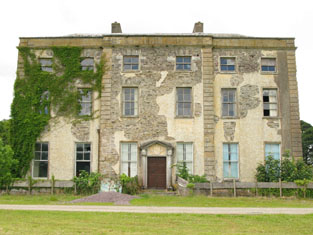
|
| Shanbally Cottage (Carrigaline) | Thomas Burke was leasing this property to Joseph Beaumont at the time of Griffith's Valuation. It was valued at £34 and included a mill. The latter, known as Rathanallig Mills (W751651), is described as "in ruins" on the 25-inch Ordnance Survey Map of the 1890s while the house is diminished in size and has since disappeared. There are still buildings on the mill site. | |
| Killanully | Rev. Edward Newenham was leasing this property to Michael Donegan at the time of Griffith's Valuation, when it was valued at £9. | |
| Kilmoney Abbey | At the time of Griffith's Valuation, Michael Roberts was leasing this property from Thomas R. Sarsfield, when it was valued at £50. Lewis referred to it as the "handsome residence" of Michael Roberts in 1837. It is stil extant and well maintained. Thomas Sarsfield was leasing a smaller propertyin the same townland, valued at £9, to Eugene McCarthy. There are two properties shown on the 25-inch Ordnance Survey map of the 1890s, Kilmoney House and Kilmoney Cottage. Buildings are still extant at these sites though extensive urban development has occurred in the area. |

|
| Ballea Castle | Francis Hodder held this property in fee at the time of Griffith's Valuation, when it was valued at £24 10s. Lewis also refers to it as his seat in 1837. Local sources suggest that It was originally built by the McCarthy family and later acquired by the Hodders. In the 1940s the Irish Tourist Association survey refers to it as being occupied by F. Dorman, retired engineer, and that it was the oldest occupied castle in Éire. Though much altered over the years, it is still extant and occupied. |

|
| Ballea Mill | Thomas Hewitt was leasing this property to Thomas Sullivan at the time of Griffith's Valuation, when it was valued at £20, including the adjacent mill. The latter property is labelled "in ruins" on the 25-inch Ordnance Survey map of the 1890s. | |
| Ballea A | At the time of Griffith's Valuation, Thomas Hewitt was leasing this property to Shaw Busteed, when it was valued at almost £10. Buildings are still extant at the site. | |
| Raffeen House | Robert Hedges White held this property in fee at the time of Griffith's Valuation, when it was valued at £42. It was the home of his wife's family, Charlotte Mary Dorman. In 1837 Lewis referred to it as the seat of T. Dorman. The property is still extant. |

|
| Raffeen Cottage | Robert White was leasing this property to Sarah Phillips at the time of Griffith's Valuation when it was valued at £12 5s. It appears on the 25-inch Ordnance Survey map as Raffeen Cottages, indicating the presence of more than one dwelling. The buildings are still extant. | |
| Raffeen House [Lower] | William Drinan was leasing this property from the White estate at the time of Griffith's Valuation, when it was valued at £13 10s. The site is now occupied by industrial premises. | |
| Shanagraigue | Richard Woodley held this property in fee at the time of Griffith's Valuation, when it was valued at £13 10s. Buildings are still extant at the site. | |
| Ardmore House | Richard Roberts held this property in fee at the time of Griffith's Valuation, when it was valued at £55. Lewis refers to is as the seat of J. Roberts in 1837. In 1943 the Irish Tourist Association Survey mentions it as the birthplace of Lieutenant Richard Roberts, Master of the ship, Sirius, the first steamship to cross the Atlantic. Ardmore is still extant and occupied. | |
| Aghamarta Castle | This property was held in fee by the representatives of Carew O'Grady at the time of Griffith's Valuation, when it was valued at £22. Lewis noted it as the seat of Carew O'Grady in 1837. Local sources suggest that he had purchased it, c.1824, from the Pomeroy family, who had purchased it from the Earl of Shannon in the later seventeenth century. The original castle was replaced by the existing house in the 1830s. The property is now a farm and cookery school. See www.thompsonsfarmshop.com |
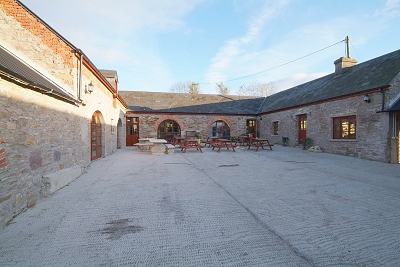
|
| Kilcrea House | In 1750 Smith wrote that Kilcrea was formerly the seat of the Earls of Clancarty, purchased by Captain Hedges from the Trustees of the Hollow Blade Company. In 1786 Wilson mentions the ruins of the castle and abbey of Kilcrea, near to which was a house named Snugborough, the residence of Mr. Keeffe. At the time of Griffith's Valuation Robert Gibbons was the occupier of Kilcrea House. He held the house valued at £20 from John Hawkes [who was leasing from Richard T. Rye]. This house is now a ruin. In March 1851 and July 1853 the estate of William Edward Ellis at Kilcrea, Desart, including Kilcrea House and 422 acres was advertised for sale. It was held on a lease dated 1740 Jonathan Ashe to Jeremiah Sullivan. William E. Ellis was the tenant of the house in 1853. William Sullivan Ellis of Kilcrea was issued with a certificate with respect to the killing of game in 1799 (see "The New Cork Evening Post" 24 March 1800). | |
| Elm Park | Garyhasty was described by Smith in 1750 as the "pleasant country house" of Mr Riggs Faulkner. I A house located on the Riggs Falkiner estate, Wilson notes it as the seat of Rev. Mr. Kenney in 1786. It was occupied by Valentine Barry in 1837 and by Thomas Barry at the time of Griffith's Valuation and valued at £36. Home of Richard Ashe Orpen in the 1870s. Elm Park is still extant and occupied. |
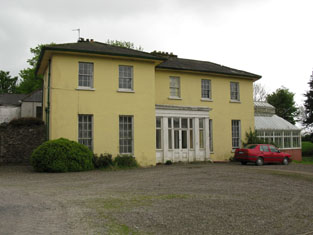
|
| Aherla Cottage | A residence valued at £11 and held by William Good in fee at the time of Griffith's Valuation. | |
| Lirias | Mrs Ellard was resident at this house in 1837 and in the early 1850s it was occupied by Benjamin Barter who held it from Sophia Ellard. It was valued at £20. The house shown as Lirias on the 1st edition Ordnance Survey map is not visible on the later 25-inch map of the 1890s though a nearby group of buildings has the same name. Some of these now form part of a farmyard complex. | |
| Aherla | Occupied by the Reverend John Madras at the time of Griffith's Valuation and held from Richard Goode, the buildings were valued at £11.10 shillings. | |
| Springmount | In 1837 and at the time of Griffith's Valuation this property was occupied by Samuel McCarthy. Valued at £19.10 shillings it was held from Lady Carbery's estate. There is still an extant house at the site. | |
| Clashanure | Home of a number of generations of the Allen family in the 18th and 19th centuries. Occupied by the representatives of Kyrle Allen at the time of Griffith's Valuation and held from Robert Meade. The buildings were valued at £15 and the Allens also had a mill valued at £13. Still extant and occupied. |
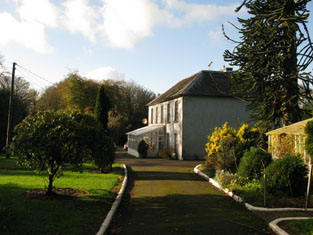
|
| Classes | Classes was occupied by William O'Callaghan in the early 1850s and held from John Stevely. The buildings were valued at £11. There are two houses at Classes on the 1st edition Ordnance Survey map. Classes House is located at W562705 while the second is labelled Classes House East and located at the site of the current Classes House which bears a date label of 1823. |
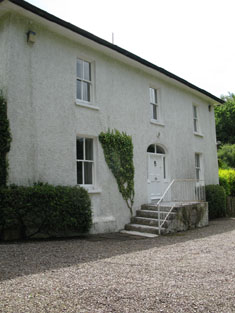
|
| Lisheens | The residence of Richard Donovan at the time of Griffith's Valuation, held from the representatives of John Stevely and valued at £16. | |
| Oriel House | Built in the first decade of the 19th century by the Board of Ordnance. The house was occupied by Charles Wilkes, the superintendant of the gunpowder mills until purchased by the Tobins of Liverpool in the mid 1830s. Mrs Tobin was a painter and their residence became known as Oriel House under Tobin ownership. The house has been a hotel since 1983. |

|
| Woodside | Wilson refers to Wood-side as the seat of Mr. Carleton in 1786. It was occupied by John Carleton in 1814 and by the Reverend E.M. Carleton in 1837. By the early 1850s the house was occupied by Horace Townsend and held by him in fee. It was valued at £40. It had become known as Kilcrenagh by the publication of the 25-inch Ordnance Survey map in the 1890s. Donnelly states that it was burnt in May 1921 during the War of Independence when it was the residence of the family of Ebenezer Pike. The National Inventory of Architectural Heritage notes that it is now in ruins. | |
| Rock Lodge | A house on the Donoughmore estate, occupied by R. Carleton in 1837 and by Henry Osborne Seward at the time of Griffith's Valuation when it was valued at £25. A house is still extant at the site. | |
| Coolyduff House | At the time of Griffith's Valuation this house valued at £16 was occupied by Alfred Parnell and held from Richard Beamish. Labelled as Coolyduff House on the 25-inch Ordnance Survey map of the 1890s. There is still an extant house at the site. | |
| Lackenshoneen | Benjamin Cross occupied this house in the mid 19th century. He held it from Philip Cross and the buildings were valued at £12. The buildings have all but disappeared on the 25-inch edition Ordnance Survey map of the 1890s and nothing remains at the site now. | |
| St Anne's Hill | Richard Barter occupied a house valued at £55 in the townland of Kilnamucky at the time of Griffith's Valuation. St Anne's Hill is marked on the first Ordnance Survey map in this townland. By the 1890s this property had become absorbed into a complex of buildings labelled Hydropathic Establishment. The National Inventory of Architectural Heritage notes that most of the complex is now in ruins though Maranatha House survives as a residence. |

|
| Ardrum | The seat of the Colthurst family, baronets, valued at £85 in the mid 19th century. The Colthursts moved from here to Blarney in the 1870s. However Sir George St John Colthurst is still given as the occupier in 1906 when the house was valued at £45. In 1944 the Irish Tourist Association survey noted it as originally the seat of the Colthursts and still owned by the family. The house is now demolished. | |
| Surmount/Sirmount | Sirmount was the residence of Emmanuel Moor in 1750. In 1786 Wilson refers to it as the seat of Mr. Hawkes. This house was occupied by G. Hawkes in 1837 and by Quaile Hawkes in the early 1850s. The property was held from Lady Carbery. The buildings were valued at £8.15 shillings. It is no longer extant. | |
| Bride View | Occupied by Samuel Hawkes and held from the representatives of William Hawkes at the time of Griffith's Valuation. The buildings were valued at £13.10 shillings. The property at this location is labelled Knockanemore House on the 25-inch Ordnance Survey map of the 1890s. There is still an extant house at the site. | |
| Ballyshoneen | A house valued at £13.10 shillings at the time of Griffith's Valuation, occupied by James Cross and held from Anthony Morgan. It is labelled Ballyshoneen on both the 1st and 25-inch edition Ordnance Survey maps. A house and substantial farm still exist at the site. | |
| Ballinphellic | A house valued at £11.5 shillings in the early 1850s, occupid by Bartholomew F. Barter and held from Sir William Chatterton baronet. W. Barter was the proprietor in 1837. A house is still extant at the site. | |
| Blarney Castle | The original 15th century castle belonged to the McCarthys of Muskerry. In 1786 Wilson describes Blarney as the "very fine seat, with ample and beautiful demesnes, of Mr. Jeffreys". Lewis wrote in 1837 that Blarney Castle was purchased in 1701 by Sir James Jefferyes, Governor of Cork [from the Hollow Sword Blades Company] who “ soon after erected a large and handsome house in front of it, which was the family residence for many years, but is now a picturesque ruin”. A new house was built in 1874 on the demesne lands by the Colthurst family and is still occupied by them. |

|
| Bawnnafinny | Described at the time of Griffith's Valuation as a caretaker's house, valued at £12 and held by St John Jefferyes in fee. | |
| Woodview | A house named Wood-view near Cork was occupied by Thomas Cuthbert in 1814. The Reverend William Spedding occupied Woodview in the early 1850s. He held it from Sir George Colthurst and the buildings were valued at £12. A house is still extant at the site. | |
| Greybrook | A house occupied by Samuel Harrison at the time of Griffith's Valuation and held from Ambrose Hickey. It was valued at £15.10 shillings. Greybrook Villa and 50 acres was held on a lease dated 1857 from Samuel Harrison to William Edward Leche and occupied by Edward Corah. Leche's interest was advertised for sale in March 1863 and Corah's in August 1865. | |
| Cloghroe House | In 1786 Wilson refers to Cloghroe as the seat of Mr. Capel. In the late 18th century this house passed by marriage from the Capel family to the Fitzgerald family. J. C. Fitzgerald was resident at Cloghroe in 1814. The house, valued at £28, was occupied by Thomas Keogh in the early 1850s and held from Thomas Fitzgerald. In 1944 the Irish Tourist Association Survey referred to it as the residence of Major O'Mahony of Blarney Mills. A house is still extant at Cloghroe. | |
| Inchbeg | Located on the Fitzgerald estate, this house was occupied by Henry Young, at the time of Griffith's Valuation. The buildings were valued at £11.15 shillings and he also held a mlll valued at £84. A house is still extant at the site. |
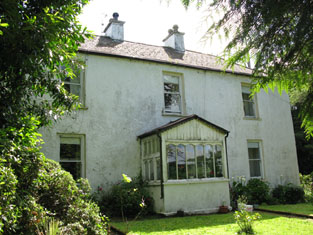
|
| Seamount House (Carrigaline) | Louisa Penrose, with several others, was leasing this property to James French at the time of Griffith's Valuation, when it was valued at £12. Henry Smith was leasing a property [W785625] valued at £10 from the same estate, also in Curraghbinny townland. In 1860, over 600 acres owned by members of the Fitzgerald family and others were offered for sale in the Landed Estates Court. The sale included Seamount House, in the possession of Henry Smith. | |
| Hilltown House (Carrigaline) | Hilltown House was leased by Thomas Busteed from Anne Cook at the time of Griffith's Valuation, when it was valued at £8. It is labelled as Hilltown House on both the 6-inch and 25-inch Ordnance Survey maps. | |
| Coolyrahilly House | Thomas Cuthbert was leasing this property from John C. Kearney's estate in 1851 when it was valued at £6. It is labelled Coolyrahilly House on the 25-inch map published in the 1890s. There is still an extant house here. | |
| Carrigrohane Castle | A fortified house that came into the possession of the Hoare family through marriage with a member of the Baker family in the 1770s. In 1786 Wilson refers to Carrigrohan as the seat of Mr. Colthurst. Reconstructed in the 1830s by Augustus Robert McSweeny, a corn merchant, who also leased the floor mills nearby. At the time of Griffith's Valuation Jane McSweeny was resident. The Castle later reverted back to the Hoares who owned it until the 1940s. They are mentioned by the Irish Tourist Association survey as resident there. It is still extant. |

|
| Roughwood | Leased by Joseph Bullen to William Bullen at the time of Griffith's Valuation, when it was valued at £2 10s. Offered for sale in the Encumbered Estates Court in August 1855, when the sale notice indicated the property was on lease from the Kearney estate. This house is no longer extant. | |
| Dunkettle | Seat of the Morris family from the late 18th century, occupied by Abraham Morris in 1814 and 1837. Wilson, writing in 1786, provides a detailed description of the demesne. At the time of Griffith's Valuation Jonas Morris held the property from George Newenham. The buildings were valued at £60. Bence Jones writes that this house was built on or close to the site of a previous house belonging to the Trant family. The house was sold in the late 19th century to the Gubbins family. |

|
| Inchera | This house, also known as Sun Lodge, was the home of the Oliver family. Occupied by S. Oliver in 1814 and Silver Charles Oliver in 1837 and in the 1850s. The buildings were valued at £54 and the property was held from the Reverend Rowland Davis Gray. Owned by C.E. Murphy in the first half of the 20th century. Post 1950 it was destroyed by a fire. | |
| Castlenalact | William Keyes held this property from the Devonshire estate in 1851 when it was valued at £35. This house is still extant. |

|
| Finnis | Thomas Gash was leasing offices from the Devonshire estate in 1851 when the buildings were valued at £11. A house and extensive farm buildings exist at the site now. | |
| Kilmore House (Bandon) | Michael Curtin was leasing this property from the Devonshire estate in 1851 when it was valued at almost £19. Noted by Lewis, in 1837, and Leet, in 1814, as the seat of William Popham. Local tradition associates this house with Maj. Daniel O'Mahony, participant in the Battle of Cremona, 1702. The original house is not extant. | |
| Ballinacurra House (Bandon) | In1851 this house was being leased by Joseph Nash from the Devonshire estate, when it had a valuation of £14. There is still an extant house at the site. | |
| Kilnagnady House | Leased by John Popham from the Devonshire estate in 1851 when it was valued at £10. There is still an extant house at this site. | |
| Brothersfort House | William Whiting held this property from the Devonshire estate in 1851 when it had a valuation of £18. Lewis also records it as his seat in 1837. The original house is not extant. | |
| Kilpatrick House | Henry Herrick was leasing Kilpatrick House from the Devonshire estate at the time of Griffith's Valuation, when it was valued at £45. A house still exists here. | |
| Keamagaragh House | Rev. Samuel Hornibrooke was leasing this property to Rev. John Pratt in 1851 when it was valued at £12. It is still extant. | |
| Kilbrogan Glebe | Held by Rev. Charles B. Bernard from the Ecclesiastical Commissioners in 1851 when it had a valuation of £34. It is still extant and now known as Mount Grellan House. |

|
| Park View (Bandon) | In 1851 Henry Cornwall held a property valued at £22 in perpetuity. It is also recorded as his residence by Lewis in 1837. By the publication of the 25-inch Ordnance Survey map of the 1890s it has become known as Ardnacarrig. It is still extant and occupied. |
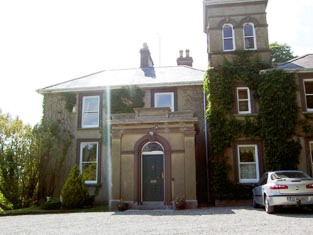
|
| Janeville (Bandon) | Rev. Henry Gillman was leasing this property from the Cornwall family in 1851 when it had a valuation of £33. It is labelled Janeville on both the 1st and 25-inch Ordnance Survey maps. The house is still extant and now known as Eversleigh House. |
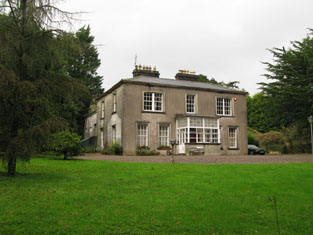
|
| Littlesilver House | Leased by Edmund B. Gash from the Devonshire estate at the time of Griffith's Valuation, when it was valued at £16. IN 1814 the residence of William Gash. A house still exists at the site. | |
| River View (Bandon) | Held by Thomas Gash from the Devonshire estate at the time of Griffith's Valuation, when it was valued at £30. A house still exists at the site. |

|
| Mishells House | In 1851 being leased by William A. O'Connor from the Devonshire estate and valued at£16. There is an extant house at the site. | |
| Moneen | Richard Splaine was leasing this property in 1851 from the Baldwin estate when it was valued at £18. | |
| Monkstown Castle | Built by a Mrs Archdeacon in the 17th century, Monkstown Castle was the home of the Shaw family in the 19th century and held from the de Vesci family. In the early 1850s Robert Bernard Shaw was resident and the buildings were valued at £54. In the possession of the Monkstown Golf Club for much of the 20th century, Further information on the building's construction is available at https://www.logainm.ie/ga/9588. |
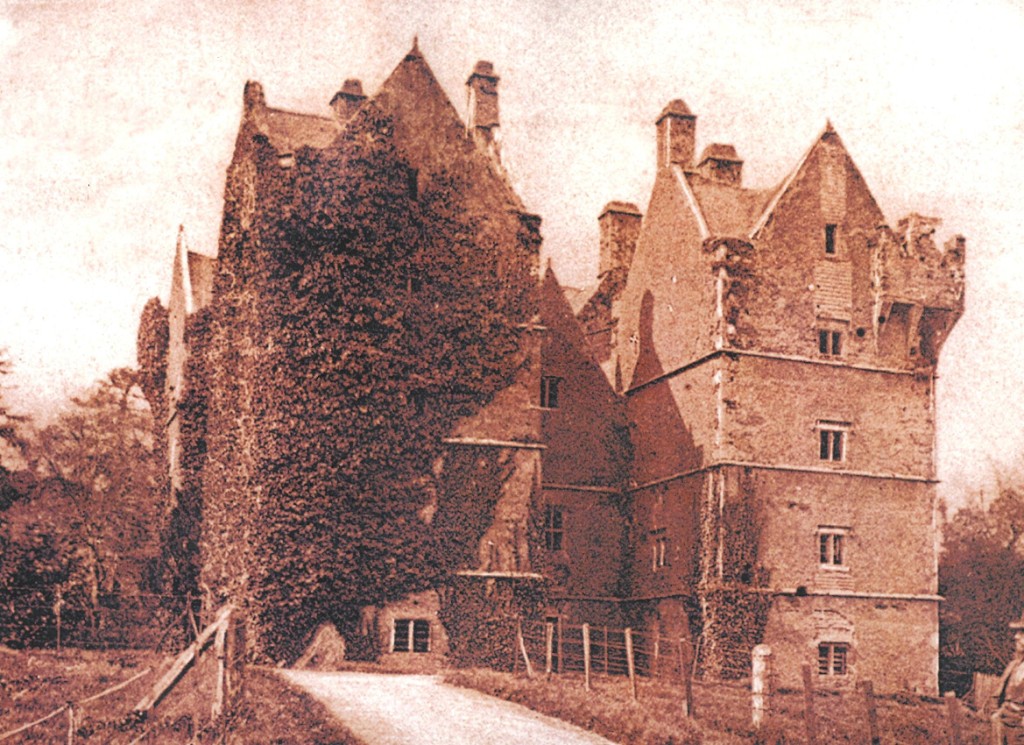
|
| Rock Castle | Frederick Oldham was leasing this property from Godfrey Baldwin at the time of Griffith's Valuation, when it was valued at £12. By 1865, it was part of the estate of Robert Forster, an insolvent, and was offered for sale in the Landed Estates Court in July of that year and again in January and November, 1866. The sale notice indicates that the lands were held on a lease, dated 1858, from the Earl of Bandon's estate to Thomas Poole. Noted by Leet as the seat of Edward Beecher in 1814. Though there are buildings extant at the site they do not appear to be occupied. | |
| Pembroke | The seat of Thomas Parsons Boland in 1837. Held in fee by him at the time of Griffith's Valuation, when it was valued at £48. Pembroke, together with many other of his houses, was included in the Sale Notice of Boland's estate in November 1859. It was offered for sale again in May 1868 when the house was noted as having "lofty and spacious rooms". In 1786 Wilson refers to Pembroke Town as the seat of Mr. Boland. In 1943 the Irish Tourist Association Survey noted that the Duke of Wellington was supposed to have stayed at Pembroke prior to embarking for the Peninsular wars. The house is no longer extant and a housing development has been built on the site. | |
| Maryborough | In 1786 Wilson refers to Maryborough as the seat of Mr Newnhan and it was also a Newenham home in the 19th century, occupied by R. Newingham in 1814, by Edward Eyre Newenham in 1837 and at the time of Griffith's Valuation. He held the property in fee and the buildings were valued at £80. Thomas Sherrard held a mansion house valued at £61 in this townland in 1906. It is now part of a large hotel complex. |
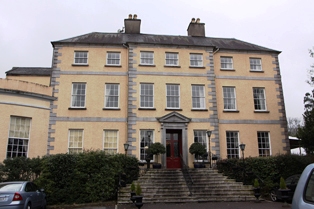
|
| Doughcloyne | Originally the home of the Ronayne family, it passed by marriage to the Sarsfields. Occupied by Dr Sarsfield in the 1770s and 1780s, by Mr Haynes in 1814, by D. Sarsfield in 1837 and by Thomas R. Sarsfield in the early 1850s, who held it in fee, value £43. In 1894 Slater notes it as the seat of Capt. T.R. Sarsfield. This house is no longer extant. | |
| Oldcourt | Oldcourt was the seat of the Goold family baronets until 1852 when it was bought by Alexander Glasgow. The sale rental of March 1852 includes a lithograph of Oldcourt. Griffith's Valuation records Glasgow holding the property in fee and the buildings were valued at £68. The Glasgows leased the house until it was bought in the early 20th century by Henry O'Shea although Alexander J. Glasgow is recorded as the occupier in 1906 when it was valued at £51. Henry O'Shea sold it to the Brothers of Charity in 1934 whose services used it as a Special Needs school. It is still extant. |
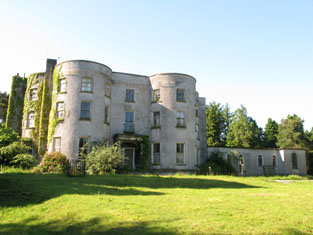
|
| Turret Farm House | At the time of Griffith's Valuation occupied by St John Jeffreys and held by him in fee, the buildings were valued at £26. | |
| Leemount | The residence of John T. Hartnell in 1814 and of Nicholas C. Brabazon at the time of Griffith's Valuation. Brabazon held the house valued at £72 from St John Jeffreys with 118 acres. The 1870s landowners' records indicate it as owned by Henry Lindsey Young and Slater records it as his residence in 1894. Leemount is still extant. |

|
| Mount Desert | The home of the Dunscombe family in the 18th and 19th centuries, it was noted by Wilson as the seat of Mr. Dunscombe in 1786. The house was occupied by George Dunscombe in 1814 and by Nicholas Dunscombe in the early 1850s when it was valued at £55. Still valued at the same amount in 1906 when it was occupied by Robert Dunscombe. The house is no longer extant and the Bon Secours Health Care unit is now located at this site. |

|
| Montpellier | A house occupied by the Reverend Morgan O'Donovan in 1837 and by Morgan O'Donovan in the early 1850s. The house was held in fee by the O'Donovans and was valued at £55. There is no trace of this house now as modern development has taken place in the area. | |
| Waterfall | Occupied by Austin Esq in the 1770s and 1780s and by T. Austin in 1837. Leased by Edward Austen who held from the representatives of Viscount Midleton in the mid 19th century. The buildings were valued at £14. The house shown at this location on the 1st edition Ordnance Survey map has disappeared by the time of the publication of the 25-inch edition in the 1890s. Buildings do still exist at the site. | |
| Castle White | Occupied by Whyte Esq in the 1770s Wilson refers to this property as Rochfordstown in 1786. George M. White was the owner in 1837 and held by him in fee at the time of Griffith's Valuation when the house was valued at £35. Lucia P. Hawkes was recorded as the occupier of two mansion houses in this townland in 1906, one valued at £27 and the other at £53. Castle White is still extant. In 2023 it was offered for sale by Sothebys International. |
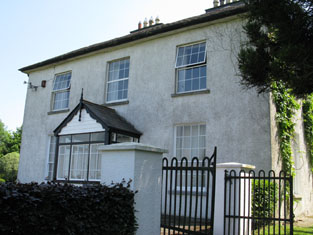
|
| Chetwynd | The Pigotts were established at Chetwynd in the early 18th century and Wilson refers to it as their seat in 1786. By the end of the century they were resident in county Laois. In 1837 J. Forrest was the proprietor of Chetwin and in the mid 19th century William Bateman occupied the house, valued at £25, which he held from John Dennis. Two houses are marked on the first Ordnance Survey map for Chetwynd. It is not clear which one was the Pigott house. | |
| Willsfort | Occupied by William Harris in 1814 and by Mrs Dowman in 1837. Francis Clancy was the occupier at the time of Griffith's Valuation holding the house valued at £26 from Jane Dowman. A house is still extant at the site. | |
| Lauriston | A house valued at £40 at the time of Griffith's Valuation and held by Nicholas D. Murphy from Joseph Anderson. | |
| Lotabeg | Bence Jones writes that this house was built circa 1800 for Sir Richard Kellett 1st Baronet. Lewis gives D. Callaghan as the proprietor of Lotabeg in 1837. Poole Hickman was resident at the time of Griffith's Valuation, holding the property from William Galway. The buildings were valued at £87. Home of the Mahony family in the late 19th century. | |
| Lota Lodge | Occupied by James H.Smith Barry in 1837 and at the time of Griffith's Valuation when the buildings were valued at £75 and held from John Courtney. The residence of Arthur Frederick Sharman Crawford at the end of the 19th century. Bence Jones writes that this house was partially destroyed by fire in 1902 and rebuilt the following year. It is now the Vienna Woods Hotel. |

|
| Lota Park | Built in the early 19th century by John Power and purchased by Jeremiah James Murphy circa 1836. By the early 1850s occupied by Colonel Ludlow Beamish who held it from John Courtney. In the 1870s the home of Edmund Burke. In the 20th century home of Joseph Gubbins and later of Mrs Francis Mahony. Now operates as a health care facility. |

|
| Lota House | Occupied by William Hastings Greene in 1837 [of the Greene family of Greenville, county Kilkenny] whose interest in Lota was advertised for sale in January 1851. William H. Greene was married to Mary Sarsfield of Doughcloyne and held Lota on a long lease from Robert Courtenay. George A. Wood was tenant in 1851 and resident at the time of Griffith's Valuation. He held the house valued at £85 from John Courtney. Now a hospital site. |
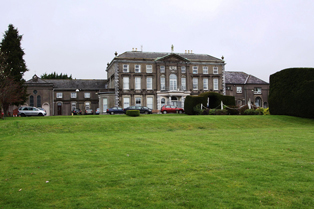
|
| Lotamore House | The residence of the Honourable C.L. Bernard in 1837 and of Frederick Hamilton at the time of Griffith's Valuation. He held the house valued at £64 from William C. Rogers. The interest of Joseph Harrison in Lotamore was for sale in February 1871. Sir William Bartholomew Hackett was the tenant. Owned in the late 19th century by the Perrier family and the Mahonys. Wilson writing in 1786, refers to Lota as the seat of Mr. Rogers. It has operated as a guesthouse for many years. |

|
| Kilbarry | In the mid 19th century occupied by George Wise and held from James H. S. Barry. The buildings were valued at £35. | |
| Ballincurrig | W.C. Logan occupied Ballincurrig Cottage in 1837 and William Coppinger occupied a house at Ballincurrig valued at £33 and held by him in fee at the time of Griffith's Valuation. | |
| Cleve Hill | Samuel Perrott was residing at Cleve Hill in 1837 and in the early 1850s when the house was valued at £68 and held from Alexander McCarthy. Cleve Hill a modern family mansion on 13 acres was advertised for sale in October 1873, the estate of Joseph Gadsden Nash and Arthur Power Harty, bankrupts. | |
| Clifton | John Moore Travers inhabited this house in the first half of the 19th century. At the time of Griffith's Valuation Clifton was valued at £65 and held from the Earl of Bandon. John M. Travers only child Elizabeth married in 1827 Sir William Henry St Lawrence Clarke, Baronet. Later the home of Nicholas Murphy and in the 20th century in use as a convent. | |
| Besborough | In the 1770s the residence of Allen Esq. The seat of the Pike family for most of the 19th century. Occupied by J. Spence in 1814 and by Ebenezer Pike in 1837 and in the early 1850s. He held the property from the representatives of Bousfield and the house was valued at £78. This house was used as a convent in the 20th century. http://www.askaboutireland.ie/reading-room/history-heritage/big-houses-of-ireland/bessborough-house-and-est/index.xml | |
| Hampstead | The residence of G. Britton in 1814 and of Lieutenant Boyle Hill in 1837. Occupied by John H. Bainbridge at the time of Griffith's Valuation. He held the property in fee and the house was valued at £22. The house is not labelled on the 25-inch Ordnance Survey map of the 1890s and is no longer extant. | |
| Ballygaggin | Occupied by Edmond Murphy at the time of Griffith's Valuation, valued at £30 and held from the Duke of Devonshire. | |
| Frankfield | Located on the side of what is now the Frankfield Golf Club, Frankfield House was occupied by S. Lane in 1837 and by the Very Reverend H. J. Newman in the mid 19th century. Reverend Newman held it from William Lane and the buildings were valued at £60. | |
| Lee Cottage | Marked on the first Ordnance Survey map this house was occupied by Henry O. Seward in the early 1850s when it was valued at £52 and held from the Ecclesiastical Commissioners. Now incorporated into the university. | |
| Castlemahon | Seat of the Chatterton family, occupied by Sir James Chatterton in 1814 and Sir William in 1837 and at the time of Griffith's Valuation when it was valued at £47. The property was held from the Ecclesiastical Commissioners. The building now houses a youth centre run by the Redemptorist Order. |
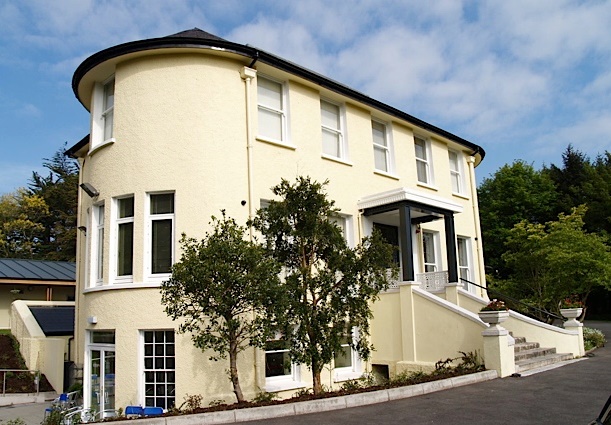
|
| Ferney | Ferney was the residence of Mrs Coote in 1814 and of J.H. Manley in 1837. Joseph Manly occupied the house valued at £68 at the time of Griffith's Valuation. He held it from Sir William Chatterton. This house is still extant. | |
| Lakeview | Occupied by Miss Allen in 1837 and by William Prittie Harris in the early 1850s when the house was valued at £28 and held from Sir William Chatterton. In the 1870s Richard Harris of Lakeview, Cork, owned 169 acres. This house no longer exists. | |
| Ringmahon Castle | The proprietor of Ring Mahon Castle in 1837 was J. Murphy. James Murphy occupied the house valued at £68 in the early 1850s and held the property from William Crawford who held from the Chattertons by lease dated 1797. This property was still in the possession of the Murphy family at the end of the 19th century. | |
| Dundanion Castle | The residence of the architect Sir Thomas Deane in 1837, valued at £78 in the early 1850s and held from Richard Sampson. Sold by Sir Thomas to William Wise in 1860 and by Wise to William Thornton in 1868. A residence is still extant at this site. | |
| Garrane | In the early 1850s Francis Hennis occupied a house valued at £30 from William Howe Hennis. A building still exists at this site. | |
| Grange | H. Conron occupied Grange in 1837 and at the time of Griffith's Valuation when the buildings were valued at £40 and held from J.D.C. Beamish. Hatton Condon was still living at Grange in the 1870s. In 1894 Slater records Grange as the seat of E.R. Conron. This house no longer exists. | |
| Lehenaghbeg | A house valued at £14 in the mid 19th century and held by Edward Casey from James H. S. Barry. Edward Casey was the owner of 121 acres at Lehenaghbeg in the 1870s. | |
| Lehenagh | Occupied by T. Curtis in 1837. By the early 1850s Mary Curtis was resident holding the house valued at £28 from the Reverend Edward H. Newinham. | |
| Lehenagh House | A home of a member of the Newingham family in 1814 and of Charles Mathew in the mid 19th century.James Mathews of Lehenagh owned 107 acres in the 1870s. This house no longer exists. | |
| Ashton | A house occupied by John Cotter from at least 1814 until his death in 1864 and by Mrs Catherine Cotter until at least 1871. It is not clear if John Cotter was a member of the Cotter family, baronets. The house is now part of the Ashton School complex. | |
| Charlemont House | Charlemont House was leased by Charles Evanson from Nicholas G. Allen at the time of Griffith's Valuation, when it was valued at £20. It was included in the sale of Evanson property in the Landed Estates Court in November 1862. It is still extant. | |
| Gawsworth | In the mid 19th century this house valued at £19 was occupied by Russell Fitton and held from the representatives of Robert Hedges and Mr Pratt. | |
| Woodhill | Originally this property belonged to the Dennis family. Following the marriage of Elizabeth Dennis to Cooper Penrose, a Quaker, of Waterford, it passed into the possession of the Penrose family, who enlarged the house. Another Cooper Penrose was the occupant in 1814 and in the mid 19th century holding the property from James Murphy. The buildings were valued at £100. The house was demolished circa 1980s. | |
| Ballycannon | The home of the Spread family in the 18th century, by the time of Griffith's Valuation the buildings were valued at £7 and occupied by Michael and John Daly who held the property from the representatives of William Spread. A building is still extant at this location. | |
| Golden Bush | A house located between Inishannon and Kinsale which was in the possession of the Wilmot family in the 1770s and 1780s. In 1814 Leet noted it as the seat of William H. Herrick and it was occupied by Thomas Herrick at the time of Griffith's Valuation when it was valued at £5. Gibson had noted it as the residence of Henry Sheares in the 1760s. | |
| Parkgarriff | This house was the home of at least two generations of David Cagneys in the 19th century. The house was valued at £40 at the time of Griffith's Valuation and held by David Cagney from Lord de Vesci. The Cagneys were still resident in the 1870s. The house no longer exists and the site is located on the edge of the Monkstown Golf Club. | |
| Ballindeasig | Substanial buildings are marked at the site of Ballindeasig House on the first Ordnance Survey map and at the time of Griffith's Valuation the house valued at £18 was occupied and held by Richard Kenefick in fee. Ballindeasig was conveyed to John C. Hennessy by Richard Kenefick in 1853. It was the home of Michael Hennessy in the late 19th century and was left by Miss Minnie Hennessy to Bishop Cohalan of Cork in 1937. The house was then converted into a holiday home for the Sisters of Mercy Order. Now known as Tabor Lodge it is a centre for the treatment of substance abuse. see www.taborlodge.ie/ |
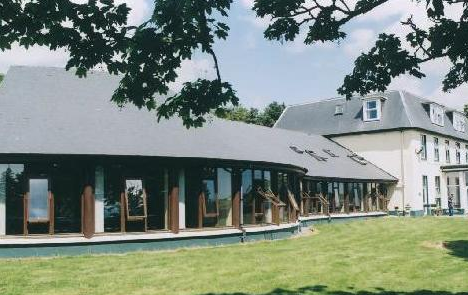
|
| Wilton | In 1786 Wilson refers to "Willtown" as the seat of Mr. Izod. Charles H. Leslie occupied Wilton in 1814 and in 1837. By the mid 19th century Matthew Leslie was resident, holding the house valued at £55 from John Craig and H. Mitchell. A college is now located at this site. | |
| Ballynora | A house valued at £14 and held by Thomas Magner in the mid 19th century from the representatives of John McSweeny. | |
| Shanakiel | Daniel Leahy is recorded as the occupier of Shanakiel House in the first half of the 19th century. The house was valued at £85 in the early 1850s and held from the Earl of Cork and Orrery. This house no longer exists and its site is located in the grounds of a hospital. | |
| Kilcrea House Upper | At the time of Griffith's Valuation, Corliss Hawkes held a house in Kilcrea townland valued at almost £10. This property is labelled Kilcrea House (Upper) on both the 1st and 25-inch edition Ordnance Survey Maps. A building still exists at the site. | |
| Seamount House (Carrigaline) | At the time of Griffith's Valuation, this property was leased by James French from the Penrose estate when it was valued at £12. The property is labelled Seamount House on the 25-inch Ordnance Survey Map of the 1890s. There is still an extant house at this site. | |
| Maglin | A house valued at £15 and held by James Barry [Berry] from John Popham and others at the time of Griffith's Valuation. Buildings are still extant at this location. | |
| Rosanna | Rosanna was the home of the Webb family in the 19th century, occupied at the time of Griffith's Valuation by Hannah (widow of the Reverend Dr John Webb) valued at £75 and held from St John Jeffreys. A building is still located at this site. | |
| Spud Villa | This house is marked on the first edition Ordnance survey map. Anne and Jane Wise occupied a house in the townland of Mount Desert valued at £38 and held from Thomas Wise in the mid 19th century. | |
| Rathpeacon House | At the time of Griffith's Valuation, Rathpeacon House was occupied by William le Fanu leasing from Richard Thomas when the house was valued at £27. In the 1870s it is recorded as the residence of John Davis. | |
| Dromkeen House (Inishannon) | This house was built after the publication of the 1st edition Ordnance map as it does not appear there. It is labelled Dromkeen House on the 25-inch edition of the 1890s. At the time of Griffith's Valuation it was leased from the representatives of John Sweeney by Christopher Dowden and was valued at £20. It is still extant. The Dowden family were business partners of the Allman family in their milling enterprises in Bandon during the mid-nineteenth century. | |
| Belrose | A house which, according to the National Inventory of Architectural Heritage, was built c.1860. The land was owned by John Hawkes at the time of Griffith's Valuation. It is still extant and occupied. |
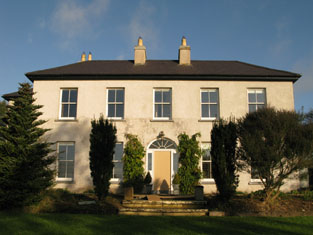
|
| Cornwall's Brewery | Henry Cornwall held this property in perpetuity at the time of Griffith's Valuation when it was valued at £180. It is labelled Watergate Brewery on the 25-inch Ordnance Survey map of the 1890s. The former miller's house is still extant and now known as The Haven. |
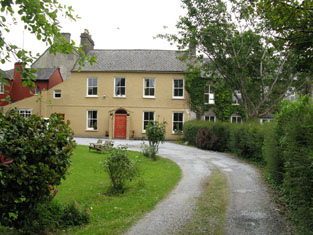
|
| Summerhill (Bandon) | A house built after the publication of the first Ordnance Survey. At the time of Griffith's Valuation, Mrs. Eliza Baldwin was leasing a property at Knockbrogan from the representatives of J. Lovell. It was then valued at £8. Summerhill House is still extant. |
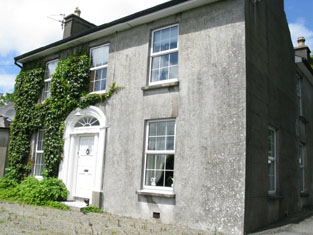
|
| Ballincollig | In 1786, Wilson mentions a seat of Mr.Lloyd at Ballincollig, "near the ruins of the castle". By the time of Griffith's Valuation, this area appears to have been in the possession of Thomas Tobin and the house may have been that leased by Rev. David Horgan, when the buildings were valued at £14. A substantial farm still exists at this site. | |
| Greenfield (Ballincollig) | In 1786, Wilson refers to Greenfield, near Ballincollig, as the seat of Mr. Carleton with another house, the seat of Mr. Wetheral, opposite. Greenfield House is labelled on the 1st edition Ordnance Survey map but is not shown on the 25-inch edition of the 1890s. Greenfield Upper, across the road, is shown on both maps. At the time of Griffith's Valuation this townland was in the possession of Francis Carleton. Greenfield House was valued at £11 while the second house in the townland was valued at almost £10. Neither were occupied. A building is still extant at the Greenfield Upper site though extensive modern housing has been built in the surrounding area. | |
| Prospect Villa (Inishannon) | At the time of Griffith's Valuation, Richard Denehy was leasing this property from the Erasmus Smith trustees when it was valued at £25. It was burnt in June 1921 during the War of Independence when it was the residence of Michael Dennehy, JP. A house still exists at the site. | |
| Mounthovel House | In 1786 Wilson refers to Mounthovel as the seat of Mr. Farmer. At the time of Griffith's Valuation, Mout Hovel House was occupied by Edward Newenham leasing from the Atkins estate and valued at £8. It is no longer extant and the area is now occupied by modern housing. | |
| Hop Island | At the time of Griffith's Valuation, Osborne Edwards was leasing this property from the Chatterton estate when it was valued at £16. It is labelled Hop Island on both the 1st and 25-inch edition Ordnance Survey maps. This may be the property referred to by Wilson as Red Island, the seat of Rev. Mr. Saunders, in 1786. A house is still extant at the site. |

